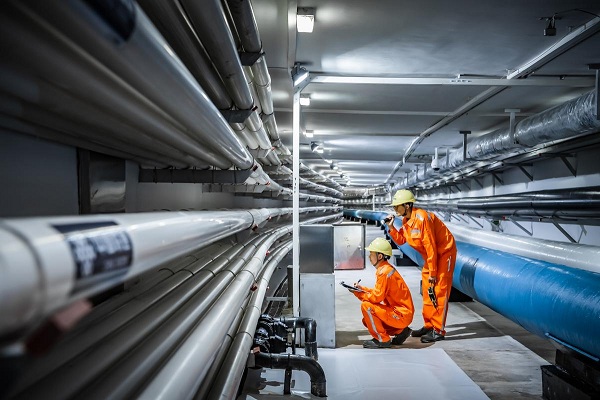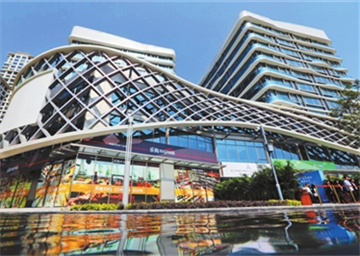New lab views Hengqin utility tunnel as intelligence empowerment model
The Tiangong Laboratory, which will use the ultra-modern Hengqin utility tunnel to further application of the "intelligence empowerment of smart cities," was unveiled June 7.
Built by Zhuhai Da Heng Qin Utility Tunnel Co, Huawei, and the Harbin Institute of Technology (HIT), the laboratory will study how the tunnel uses sensing and communication technologies, promotes high-quality development, and innovates agglomeration ecology (protecting the environment via urban clusters) in the underground space.
The 33.4-km (21-mile) underground utility tunnel integrates electric power and water supplies, communications, refrigeration, condensate, and other municipal pipelines. It also allows remote and intelligent monitoring, "smart" ventilation, automatic water drainage, disaster warning, and fire control. It continuously services every corner of the Hengqin Cooperation Zone.

Hengqin utility tunnel [Photo courtesy Guanhai App]
Da Heng Qin Utility Tunnel Co, the operator, has arduously protected the utility tunnel from being adversely affected by frequent typhoons, rainstorms, and other abnormal weather and has ensured safe operation. The collaborative laboratory will strengthen cooperation and exchanges in basic research, achievement transformation, and organic connection of market applications in the field of safe operation of underground utility tunnels, noted general manager Yan Lisheng.
Envisioned is a leading and intelligent utility tunnel operation and maintenance mode with a stable and efficient industrial technology innovation chain that is ready for application across the country, said Yan.
Da Heng Qin has been researching a distributed optical fiber sensing system applicable to comprehensive utility tunnels under adverse conditions. Optical fiber temperature sensing, gas detection, structure health monitoring, vibration intrusion prevention, and liquid level sensing systems have been installed to realize long-distance and high spatial resolution real-time temperature and strain monitoring.
The latest generation of integrated sensing and communication series developed by HIT's Optical Fiber Sensing Technology Research Center will be applied in the Hengqin utility tunnel. This will enable data communication and sensor detection in one system with improved comprehensive performance, said Dr Guan Peng at HIT.
Sun Jianping of Huawei expressed hope that new-generation integrated sensing and communication products and solutions would be incubated based on the utility tunnel experimental base in Hengqin, HIT's leading technologies of optical fiber sensing, and Huawei's mature R&D achievements in data communication.
Next, the joint innovation base will improve the innovation and technology supply capacity of the Hengqin utility tunnel through in-depth integration of sci-tech innovation and industry-university-research.



